culled from:http://youqueen.com
Potassium is something that all of us need, but the bad news is that most of us modern humans actually need more of it. Lots more! Fortunately there’s good news, too! Whether you’re a smoothie lover, a vegetarian, a pescatarian, or an omnivore who loves to graze, there are plenty of potassium-packed foods out there to satisfy every diet.
Animal, Vegetable, Mineral
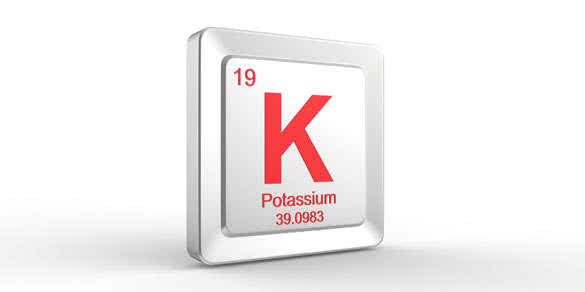
Potassium is a mineral, not a vitamin. What does that mean? Basically, it’s a type of “good” salt that’s crucial for our physical well-being. In fact, individuals with high blood pressure and other reasons to avoid consuming too much sodium sometimes use table salt substitutes that contain potassium lactate. Try sprinkling that on your french fries! No, don’t, unless a doctor tells you to. I’ve heard they have a bitter aftertaste…
Though the symbol for potassium on the periodic table is K, vitamin K is actually something entirely different from potassium. It’s responsible for very different functions in the body, so don’t get it twisted.
Potassium is a salt
Have you heard of the potassium-sodium balance in the body? It’s so important for human health, keeping blood pressure and other vitals like fluid balance and muscle function in check. It aids brain, nerve and heart function, helps to make our bones stronger, and is actually a part of every cell in the human body. You want to feed those cells, right?The problem is that so many of us today are getting far too much sodium in our diets, and too little potassium. Sodium causes fluid retention, in some cases leading to high blood pressure. Potassium can actually help to lower the risk of heart attack and stroke. It helps to protect blood cells from oxidative damage, the result of a body that’s out of nutritional balance’s inability to combat the harmful effects of free radicals.
So how much do I need?
It is recommended that healthy adults get at least 3000 milligrams of potassium per day. Yes, this seems like a lot. But when you begin to discover all of the many foods BESIDES bananas that can satisfy this nutritional need (which you will, if you keep on reading), hopefully this goal won’t seem quite as difficult to achieve.And where can I get it?
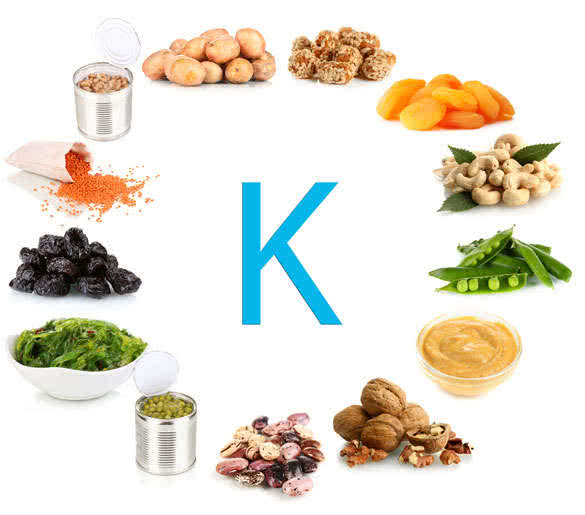
Potassium is found in a variety of whole, unprocessed foods. In fact, whole foods that have been minimally processed are the best providers of most essential vitamins and nutrients. Some of the best sources of potassium are beans, leafy greens, sweet potatoes, cooked tomatoes, and clams. Oh, and don’t forget fish, prunes, carrots, edamame, winter squash, yogurt, oranges and avocados- they’re fantastic sources of potassium, too.
Yogurt actually has a little more potassium than other dairy products, plus it has active live cultures to boot. See my article on Greek yogurt. Halibut, tuna, cod and trout top the list if you’re in the mood for some potassium-rich fish (which you should be if you’re aiming for optimal heath. You should try to eat some fish at least once or maybe twice per week.)
You mean I have to cook?
Cooking at home is ideal if you want to have full control over your portions and nutritional intake. Cooking for yourself does take some time and planning, but it also means you get to control exactly what goes into the food, and what stays out.To help get you started on the path towards potassium-boosting success, here’s a list of some of my favorite, healthy, potassium-packed snack and meal suggestions, along with recipes:
Lightly sautéed beet greens and mushrooms with lentils and roasted sweet potatoes
Peel and chop a large sweet potato, and place on a baking sheet. Drizzle with olive oil, sprinkle with salt and pepper, and toss to coat. Bake in a 375°F oven for about 25 minutes, or until crisp on the outside and tender on the inside.
While the sweet potatoes are roasting, thoroughly wash and chop a bunch of beet greens and about a cup of mushrooms. Pick over a cup of lentils, discarding any dark or shriveled lentils and pebbles, and add to a saucepan with two cups vegetable broth. Bring to a boil, then reduce to a simmer and cook for 20-30 minutes, or until the lentils are tender.
While the lentils are cooking, drizzle a large frying pan with olive oil and sauté the mushrooms over medium heat until they are lightly browned. Add the greens, and continue to sauté until they are tender. Combine the lentils and sweet potatoes with the vegetables.
Yogurt topped with chopped prunes and a drizzle of honey (Try those prunes, you’ll like them!)
In a parfait glass, top about a cup of plain Greek yogurt with two chopped prunes and a drizzle of honey.
A tall glass of homemade carrot, orange and spinach juice
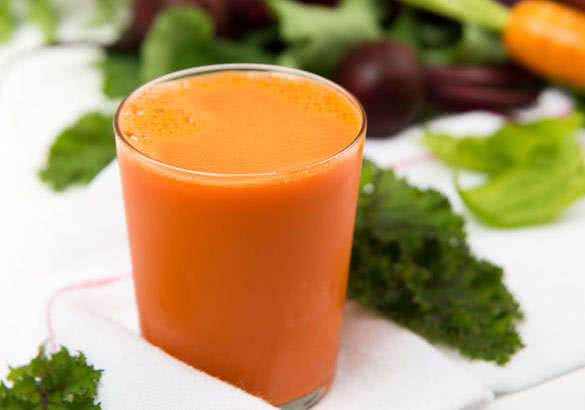
Thoroughly wash an orange, a carrot, and a handful of baby spinach leaves. Remove and discard the stem end of the carrot, and half of the peel from the orange. Cut the orange in half and remove any seeds. Run the orange, carrot and spinach through a juicer and serve over ice in a tall glass with a straw. Drink up right away to get the most nutritional benefit.
Oven-roasted spaghetti squash with homemade marinara sauce
Using a large, sturdy knife, cut a medium-sized spaghetti squash in half lengthwise, then scrape out the seeds using a large spoon. Place on a baking sheet cut-side down, and bake in a 400°F oven for 30-45 minutes, or until tender.
While the squash is roasting, chop an onion and mince two cloves of garlic. Chop the contents of a 28-oz. can of whole plum tomatoes, reserving the liquid. In a small pot coated with about a tablespoon of olive oil, sauté the onion until translucent. Add the garlic and stir until fragrant. Then add the chopped tomatoes and reserved liquid to the pot, along with a little salt, pepper and dried oregano. Bring to a boil, then simmer on low for at least 20 minutes.
Taste the sauce for doneness, then puree with an immersion blender. Fluff the roasted spaghetti squash with a fork and serve in the skins, topped with homemade marinara sauce.
Grilled sesame tuna with a soy glaze and a side of lightly salted edamame
Heat a grill pan until very hot. Prepare a simple soy glaze by combining about a tablespoon of soy sauce, a teaspoon of honey, half a teaspoon of sesame oil, and a teaspoon of rice wine vinegar, plus a pinch of wasabi if you’re in the mood. Season two tuna steaks with salt and pepper, then brush the glaze onto the tuna.
Scatter about two tablespoons of sesame seeds on a plate, and press the glazed side of the tuna into the seeds. Brush the other side of the tuna with olive oil and season lightly with salt and pepper. Brush the heated grill pan with olive oil, and sear the tuna on both sides. Edamame in the pod is available frozen, and can be lightly steamed.
A baked sweet potato, banana and yogurt smoothie
Poke holes into a small sweet potato on all sides and bake directly on the rack in a 425°F oven for about 45 minutes, or until soft. Cool completely, then scoop out the flesh and blend with a ripe banana, about half a cup of plain yogurt, and enough almond milk to create a thick smoothie. I like to sweeten mine with a drizzle of maple syrup. Serve over ice in a tall glass with a straw.
Manhattan-style clam chowder
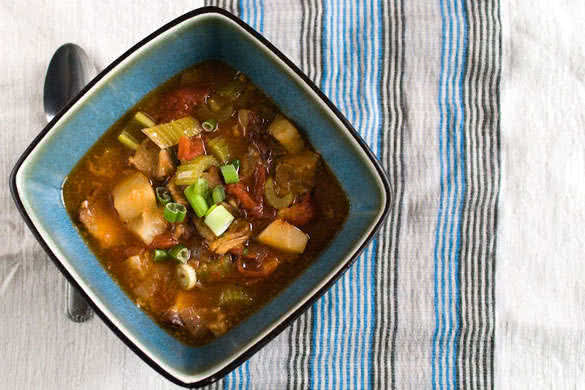
Chop half an onion and a stalk of celery, and mince two cloves of garlic. Peel and chop a small potato. Roughly chop about half of a large can of whole plum tomatoes, reserving the liquid.
Heat about a tablespoon of olive oil in a soup pot and sauté the onion until translucent. Add the garlic and a pinch of red pepper flakes, and stir until the garlic is fragrant. Stir in a dollop of tomato paste. Throw in a bay leaf and the chopped potato, add a bottle of clam juice and a little bit of water to cover the vegetables, and bring to a boil.
Lower the heat and simmer until the potatoes are tender. Add the chopped tomatoes and reserved tomato liquid. Cover and simmer stirring occasionally, just for a few minutes until the tomatoes begin to break down and the oysters have good texture. Season with salt, pepper, and a few shakes of dried parsley.
Spinach salad with sliced avocado and fresh orange juice vinaigrette
Thoroughly wash and dry a salad’s worth of baby spinach. Peel and slice a ripe avocado, and add to the bowl with the spinach. In a small bowl, combine the juice of an orange, a little bit of champagne vinegar, a dollop of Dijon mustard, and half of a shallot that’s been finely minced. Season with salt and pepper, then drizzle olive oil into the dressing while you’re whisking.
Taste, adjust the seasoning to your liking, then toss the salad with the dressing. Top with chopped pistachios or slivered almonds if you’re looking for some crunch.
Kidney bean and tomato chili with sautéed Swiss chard
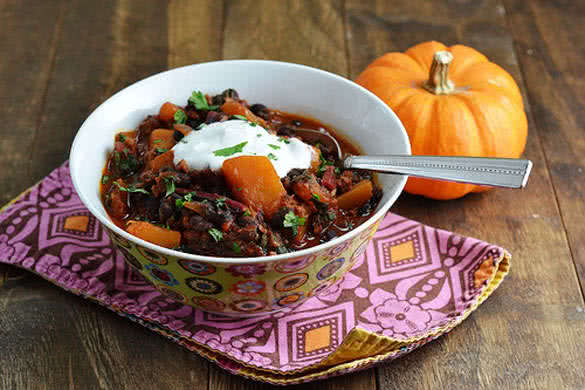
Chop an onion, a red bell pepper, and a jalapeño if you like it spicy. Mince two cloves of garlic. Coat the bottom of a stew pot with olive oil and sauté the onions until translucent. Add the garlic and stir until fragrant, then add the chopped peppers. Stir in two tablespoons of ground cumin, plus some salt and chili powder to taste. I like the kind that includes a combination of cayenne and ancho chilies.
Drain and rinse two cans of kidney beans. Chop the contents of a 28-oz. can of whole plum tomatoes, reserving the liquid. Add the tomatoes and reserved liquid to the pot and stir to combine. Then stir in the beans and bring to a boil. Simmer with the lid on, stirring occasionally until the beans are tender and flavorful. Add a splash of water as the chili cooks if it’s looking dry.
In the meantime, thoroughly wash and chop a bunch of Swiss chard. Sauté in a large frying pan coated with olive oil until tender and season with salt and pepper. I like to serve this with slices of polenta that I’ve topped with sharp cheddar cheese, and heated under the broiler until golden and bubbly.
Citrus and herb-crusted cod with a side of lima beans and oven-roasted potatoes
Scrub a small bag of red-skinned potatoes and chop. Drizzle with olive oil, sprinkle with salt and pepper, and toss to coat. Bake in a 375°F oven for about 25 minutes, or until crisp on the outside and tender on the inside. While the potatoes are roasting, zest half an orange and half of a lemon. Chop a few tablespoons of parsley and some tarragon if you have it.
Combine the zest and chopped herbs with about ¾ of a cup of panko breadcrumbs, and season with salt and pepper. Place a package of frozen lima beans in a saucepan with a little bit of water and steam until tender.
While the beans are cooking, brush two cod fillets (with the skin on) with olive oil and season with salt and pepper. Press the breadcrumb mixture onto the skinless side of the fish, and heat a frying pan that’s been coated with a decent layer of olive oil. Sauté the fish until the skin is crisp and the breadcrumb coating is golden.
Drain the lima beans and stir in about a tablespoon of butter. Sprinkle the potatoes with chopped chives and serve with lemon wedges to squeeze onto the fish.
So… can’t I just take a pill instead?
Even after reading through all of those delicious-sounding recipes, you’re still asking me that question? Even though potassium is available in supplement form, potassium gained from natural sources like whole, unprocessed foods is best.Vitamins and minerals found naturally in foods, rather than those taken in the form of supplements, are generally more bioavailable. This means they’re more easily absorbed by the body and thus have the potential to offer the most nutritional benefit.
For individuals with kidney disease, foods high in potassium should be avoided. Before making any changes to your diet, be sure to consult with your general practitioner or a nutritionist.
In the end, focusing on adding more potassium to your diet is a good idea for most people. Whether young, old, or somewhere in between, there are plenty of potassium-rich foods out there to satisfy every diet. Foods such as those described above are available in every season, and can be prepared in sweet or savory styles to satisfy every taste.
Clams and beet greens might not be up your alley, but you can always whip up a refreshing glass of orange and carrot juice instead. And who doesn’t like a gooey, warm slice of banana bread every once in awhile? Sorry, I’m not sharing the recipe for that one this time!
Oh, and here’s one last tip to leave you with. You know how you always peel bananas starting with the stem end, i.e. the “handle.” Well, guess what? You’re doing it wrong! Peeling a banana from the bottom is actually the better option. All of those icky strings just slide right off. Even monkeys peel bananas this way. I’ll wait while you go try it out. In case you’re having trouble, all you need to do is pinch off the end, and then peel the skin back.
 RSS Feed
RSS Feed Twitter
Twitter

 07:33
07:33
 Executive Republic
Executive Republic
 Posted in
Posted in
0 comments:
Post a Comment